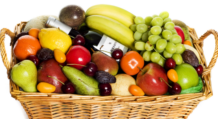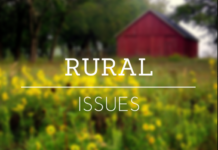Take Extra Precautions When Cooking for Large Groups
As the holidays approach, a K-State food scientist discusses quantity cooking food safety.
OLATHE, Kan. – Food is always a great way to get people together, and often people like to cook food for big gatherings that might include large family meals for the holidays, concession stands, church suppers or community meals for the hungry. When a large number of people gather for a meal, food preparers and servers should take extra precautions to make sure they are practicing food safety.
“Unfortunately, there have been cases of foodborne illness linked to events such as church suppers and school fundraisers,” said Londa Nwadike, consumer food safety specialist for K-State Research and Extension and the University of Missouri Extension.
“Often these events are staffed by volunteers, so you want to do all you can to encourage them to practice things safely to make sure no one is going to get sick.”
If you are planning an upcoming meal to feed a large number of people, Nwadike said you should consider many food safety practices in shopping, storing, preparing, transporting, serving and cleaning up the food. Many of the food safety practices are like those you would follow in everyday cooking for your family, while some are slightly different.
Shopping
Planning ahead for a large meal is important, Nwadike said, so make a list prior to shopping. Also consider how to properly transport the food from the store to the place you plan to prepare the food.
“If you’re buying large quantities of perishable foods, like meats or cheeses, you need to make sure you have enough cold storage, both on the way home and also once you get the product home,” she said. “Those of us in food safety have what we call a temperature danger zone, 40 to 140 degrees (Fahrenheit), and you don’t want (perishable) food to be in that range for more than two hours.”
Also when shopping, separate raw meats from the other products you are buying.
“For example, put meat at the bottom of your cart, and put lettuce on top, so that no meat juices will be dripping onto the lettuce,” Nwadike said. “This is the same when you’re bagging groceries. Make sure you’re separating out raw meat from other products.”
Storing
Keep in mind after shopping, you’ll have larger quantities of food than you might be used to and will need extra space to store it until preparation.
“If you’re buying 20 turkeys, for example, make sure you have refrigerator or freezer storage space for them,” Nwadike said.
Make sure you don’t overfill your refrigerator, she said, as it needs some space to circulate cold air to work properly. Having a thermometer in your refrigerator is important, so you can make sure the temperature in all areas is staying below 40 F.
“The thermometer is not the dial on the refrigerator, which helps you set the temperature,” she said. “You should have a thermometer in addition to that dial, and they’re available in most stores inexpensively.”
When storing foods in the refrigerator, not only do you want to make sure that you have enough space, but you also want to store it in the proper order.
“Raw meats should be stored in the bottom so they’re not dripping on anything else,” Nwadike said. “Poultry needs to be on the bottom shelf, because it needs to be cooked to the highest temperature. Ground meats can be stored on top of poultry, and then whole cuts, like roasts, can be stored on top of those. If you have any ready-to-eat foods, such as lettuce, tomatoes and cheeses, those should be stored on the top shelves.”
Like refrigerators, it’s good to have a thermometer to monitor temperatures in the freezer. Unlike refrigerators, freezers tend to work more efficiently when they’re fuller. But, over-filling the freezer can lead to major problems if you’re not careful.
“It’s good practice to keep your freezer full but not over-full,” Nwadike said. “With any freezer that’s too full, sometimes the door doesn’t close properly. Food could thaw out, and your freezer will be working too hard to try to keep it cold.”
When storing non-perishable foods, she said you don’t want to put them directly on the floor. Store cans of baked beans, for example, on a rack off the floor, which could be dirty or potentially have contact with mice or insects.
Proper storage extends to having enough food-grade containers to hold the cooked food while serving.
“You can’t just use a garbage can, garbage bags, a five-gallon bucket or whatever container you can find,” Nwadike said. “Use food-grade containers to make sure you won’t get any chemical or microbial contamination in the prepared foods.”
Preparing
Many cases of foodborne illness are linked to improper cooking of the products or improper cooling, Nwadike said. If you’re cooking meat for large groups of people, the first step is to allow enough time to thaw the meat and get it cooked all the way through.
Do not thaw meat on the counter or in the sink in hot water, she said. These methods allow the outside of the product to thaw more quickly than the inside, meaning the outside could be well above 40 F while the inside is still frozen. Thawing slowly in the refrigerator, in cold water or in the microwave are the safest ways.
“Whenever you’re cooking meat, whether it’s just for your family or for a crowd, you want to make sure to use your food thermometer,” Nwadike said. “It is essential to make sure that the product is getting to the proper temperature. Poultry should be heated to at least 165 F, ground meats to 160 F, and whole-muscle cuts such as chops, steaks or roasts to 145 F with a three-minute rest time.”
Make sure to cool the food quickly, she said. The easiest thing to remember is getting the internal temperature of the food below 40 degrees in less than four hours and getting the food in the refrigerator in less than two hours.
Rather than putting hot food directly in the refrigerator, you can take a pot of food or the inside of a slow cooker and put it into a bath of ice water in your sink. Stirring the food to transfer the heat out will help it cool faster. You can also put large quantities of food in shallower pans, or divide it into smaller quantities to cool.
Transporting
If you’ve cooked a large amount of food at home and need to transport it somewhere else for serving, you should plan to keep the food out of the temperature danger zone.
“You need to have a way to keep it hot, such as wrapping it in blankets, or putting it in an insulated cooler to keep it hot or cold,” Nwadike said. “If you need to reheat it before the meal, get it nice and hot to 165 F first, and then you can maintain it at 140 F. This kills off any potential bacteria that could be there from transport.”
Slow cookers are not designed for heating up food, she added, so if you’re reheating something that’s cold, reheat it in the microwave, on the stove or in the oven. The slow cooker, however, is useful for holding foods at 140 F.
Serving
“As with anytime you’re preparing food, you want to make sure you are washing your hands properly,” Nwadike said. “If you’re serving food, it would be a good idea to wear gloves. Part of the reason why gloves are useful is that the customer might feel more comfortable seeing gloves and feel that’s safer. But, even if you’re using gloves, you still need to wash your hands. Gloves are not a substitute for hand washing.”
Cleaning up
Using disposable dishes when serving food to many people saves time on the clean up, but many pots and pans will still need cleaning after the meal. You should also thoroughly wash and sanitize countertops and utensils, particularly after handling raw meat.
“When you have a large quantity of dishes, you need to make sure you’re washing them properly,” Nwadike said. “If you have a commercial dishwasher available, that’s probably the best option. If you’re using sinks, make sure to clean your sink first so there’s no residue or germs in the sink. Then make sure to scrape leftover food from the dirty dishes, wash, rinse, sanitize and let them air dry.”
More information
More information about food safety is available online on the K-State Rapid Response Center’s website (http://www.rrc.ksu.edu/p.aspx?tabid=28) or K-State Research and Extension’s food safety website (https://www.ksre.ksu.edu/foodsafety/).
Story By: Katie Allen




